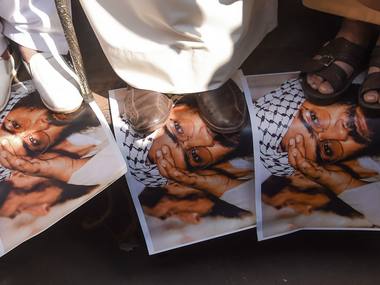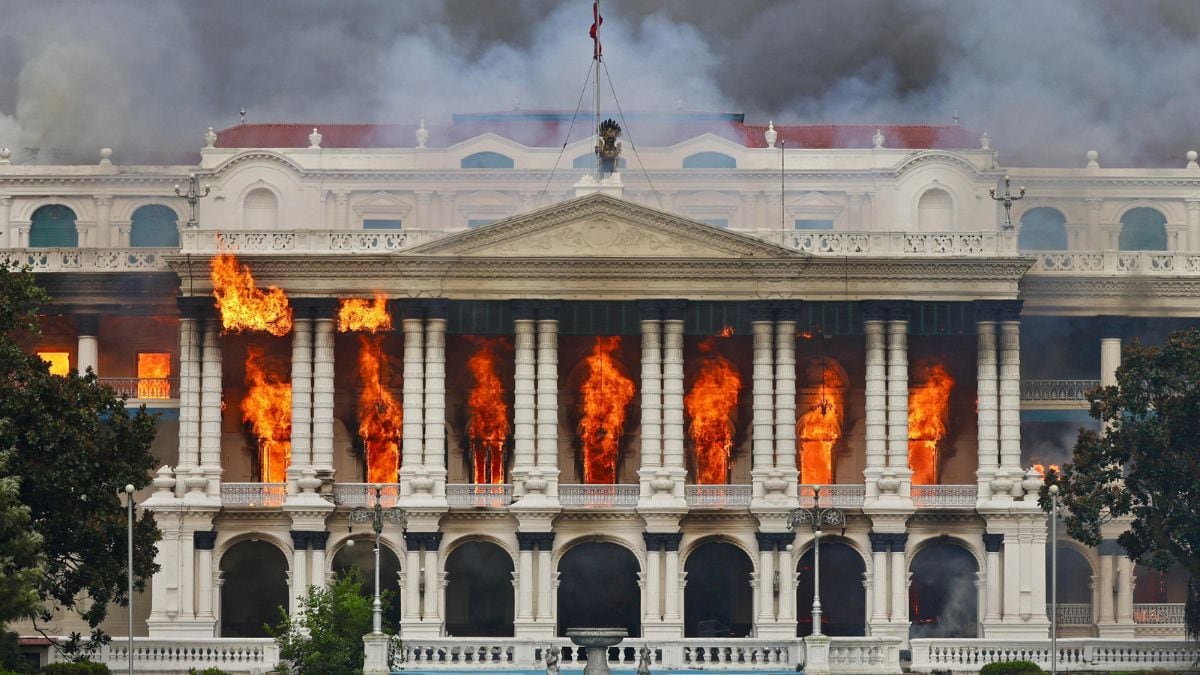Amid the ongoing tensions between India and Pakistan, the
fake news network is on a roll, peddling “facts” that are confusing the public and some which are outright provocative. Given the current circumstances, the latest story it spun went viral within minutes — that Jaish-e-Mohammed (JeM) chief Masood Azhar is dead.
Reports across social media even went into detail about the JeM chief dying of liver cancer and having been at the terror camp in Balakot when the Indian Air Force carried out its air strikes on 26 February. We could say that the story might have been believable amid other reports that he is undergoing
dialysis regularly for renal failure , and even more so after Pakistan foreign minister Shah Mahmood Qureshi himself said the
JeM chief is "unwell to the extent that he can’t leave his house". [caption id=“attachment_6189521” align=“alignleft” width=“380”] Unconfirmed reports on Sunday said Jaish-e-Mohammad chief Masood Azhar had died of liver cancer. AFP[/caption] Soon after the fake news on Azhar’s death created a frenzy on social media,
more reports emerged that reported that the JeM chief is alive and reports of his death are incorrect. Azhar’s JeM claimed responsibility for the suicide attack in Jammu and Kashmir’s Pulwama, which killed 42 CRPF troopers, on 14 February. In retaliation for the attack, the Indian Army carried out air strikes on the group’s Balakot terrorist training camp in Khyber Pakhtunkhwa province early on 26 February. The next day, there were a number of developments within minutes of each other — Pakistan claiming it had shot down two Indian aircraft and arrested a pilot; an Mi-17 chopper
crashing in Budgam ; and India claiming it had shot down a Pakistani F-16 in Nowshera — which altogether created much circulation on social media. This left journalists scurrying to get reports confirmed and compete with the fake news network to get the real information out there. Pakistan military spokesperson Asif Ghafoor’s tweet on India’s “LoC violation” near instantly set off the
fake news brigade , which fished out images and videos of previous aircraft crashes in India to project them as the Pakistan Air Force’s retaliation against Indian aircraft violating their airspace. A number of these fake videos and images were shared even by the mainstream media in Pakistan, including dailies Dawn and Express Tribune and news channel Pakistan Television Corporation. Among these images was one of Wing Commander Vijay Shelke, one of the pilots who had ejected safely after a midair collision between two Surya Kiran aircraft at the Yemlur grounds in Bengaluru. The other pilot died in the crash. Videos and images of an IAF Mikoyan MiG-27MU’s crash in Jodhpur on 12 June, 2016, as well as of a crash of a Hawk Advanced Jet Trainer on 3 June, 2015, in Odisha’s Mayurbhanj were widely shared on social media, purported to be the Pakistani Air Force’s action against IAF jets. It didn’t help that several reports, including one by the Express Tribune, shared images of the IAF chopper that crashed in Budgam as those apparently of the Indian aircraft that Pakistan shot down across the border. In India, too, people buoyed by the IAF air strikes shared scores of unverified images and videos — from
footage of video games to photographs from the devastation caused by an earthquake in Balakot in 2005. Among the fake news peddlers here was the ‘I Support Amit Shah’ fan group on Facebook. Images from various blasts and bombings were also shared as the purportedly destruction that the IAF left behind in its wake. The emotional outburst in reaction to the Pulwama tragedy, the euphoria on both sides after the strikes carried out by the two air forces and the pace with which news — fake or otherwise — was churned out all added to the confusion of readers and viewers. This was in addition to
media speculation and the uncertainty over a lot of facts, such as the extent of damage caused by the Balakot air strikes and the number of casualties.
Amid the ongoing dogfight between India and Pakistan and tensions at the border, the fake news network is on a roll, peddling “facts” that are confusing the public and some even borderline provocative.
Advertisement
End of Article


)

)
)
)
)
)
)
)
)



